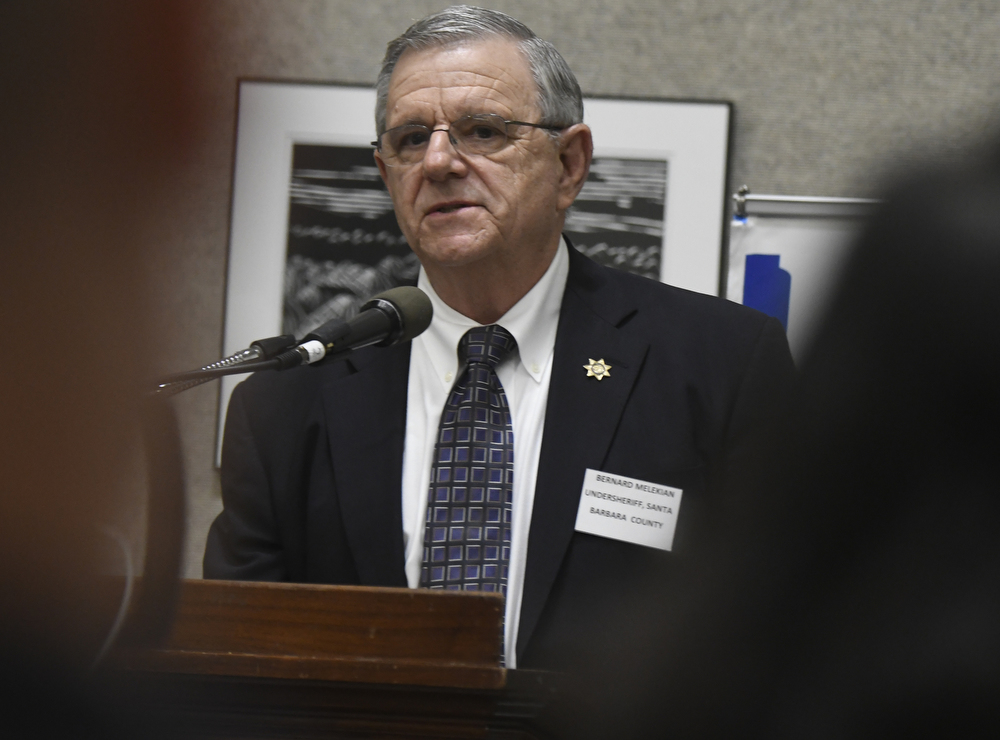S.B. Leads Way in Gun Violence Prevention
Another Day, Another Mass Shooting

It was one of those throwaway lines that keeps rattling around my head. Maybe it was more a question. “How and when should government intervene in the lives of the strange?” The person asking it was Bernard Melekian, then the undersheriff of Santa Barbara County. He’s since moved uptown and is working for Santa Barbara County CEO Mona Miyasato. Melekian used the word “strange” to set the people to whom he was referring apart from people with mental illnesses. At the time of our conversation, a mass shooter had just opened fire at students attending Stoneman Douglas High School in Florida, killing 17. There had to be a line, Melekian said, “between arresting people and doing nothing.”
Two weeks ago, another mass shooter opened fire, this time at a country-western bar in Thousand Oaks, said to be the third safest city in America. Counting his own, this shooter took 13 lives. Two weeks later, we still don’t know his motive, just as we still don’t know the motive of the gunman who killed 58 and wounded 422 at an outdoor country-music festival in Las Vegas. A public school principal in Michigan, we are told, is now arming his students with hockey pucks to defend themselves in the event of a mass shooting.
Where is Don Rickles when you need him?
Nationally, the debate over gun violence has devolved into a stalemated blame game between people with mental illnesses and the gun nuts. The National Rifle Association (NRA) would rather have mentally ill people locked up than anyone’s guns. It’s a tidy formula, but the facts are rarely so obligingly simple. This past April, for example, Ventura County mental-health crisis workers were dispatched to the home of the Thousand Oaks shooter. Neighbors called because he’d been banging on walls, acting irate and irrational. He was an ex-marine; he’d served time in Afghanistan. Maybe he had PTSD. Or maybe he was just a dickhead, a clinical diagnosis conspicuously absent from all diagnostic manuals. Mental-health workers determined the shooter-to-be didn’t present an immediate threat to either himself or others. They left. Seven months later it was bang-bang, and the flags were flying at half-staff for a 29-year veteran of the Ventura County Sheriff’s Office.
There is, it turns out, a middle option. It’s called the gun violence restraining order (GVRO). It allows law enforcement and family members to petition a judge to have guns temporarily taken away from people unstable and volatile but not technically insane. The state law enabling this approach came in the wake of the mass shooting in Isla Vista by a bitter, angry, socially awkward young male that left seven people dead. That bill was introduced by Santa Barbara’s then assemblymember Das Williams. And law enforcement officials in Santa Barbara County have used this tool more aggressively than any other county in the state since it went into effect two years ago.
That, unfortunately, is not saying much. Most law enforcement officials, it turns out, don’t know anything about the law and use it even less. In Ventura County, gun violence restraining orders were sought just four times in two years. In Santa Barbara — with half as many people — it was sought and obtained 21 times. (Los Angeles County — with a population 20 times bigger than ours—sought such orders 25 times.) Would it have helped in Thousand Oaks? It’s not clear. We do know the shooter had bought a Glock handgun two years prior. We don’t know if the mental-health responders and law enforcement officials who visited him in April knew this. Emergency restraining orders are good for only three weeks. Unless a permanent restraining order were then obtained, any seized guns would have to be returned.
Garen Wintemute, an emergency-room doctor in Sacramento and head of the UC Davis Firearm Violence Research Center, told me he knows of two instances in the last year in which mass shootings had been prevented because of the restraining order option. Credible threats had been made in Freemont and Ontario — one involving a disgruntled ex-worker and one involving a would-be terrorist. Both had purchased weapons — one an AK-style assault weapon and the other a shotgun — but both were stuck in the 10-day waiting period mandated by state law when their threats came to the attention of law enforcement. Using the new restraining order law, Wintemute said, law enforcement agencies effectively prevented both prospective shooters from obtaining their weapons of choice.
Since the Parkland high school shooting, Wintemute said, eight states have passed gun violence restraining order laws. Florida was one of them. The NRA opposed the bill in Florida just as it had in California. With the smell of Parkland blood still fresh in their nostrils, the Florida legislature bucked the NRA — an unprecedented insurrection — and passed the bill. So too did Florida’s governor. The NRA’s response? Rather than admit defeat, Wintemute said, the all-powerful gun lobby reversed its original position and came out in support of the bill after the fact.
Wintemute, who had a hand in crafting California’s bill, is now studying how it’s worked so far. With only 192 cases filed the first two years, it got off to a slow start. That’s starting to change. In Florida, the GVRO law has already been used hundreds of times. A similar law in Maryland—passed after five people were killed at the shooting at an Annapolis newspaper—was used 100 times its first month.
If you locked people up for being strange, we’d all be in jail. Guns, however, are another matter. Prior to Thousand Oaks, there had been 306 mass shootings this year. Now, another 16 have occurred. What’s the line between arresting people and doing nothing? It’s spelled GVRO.



